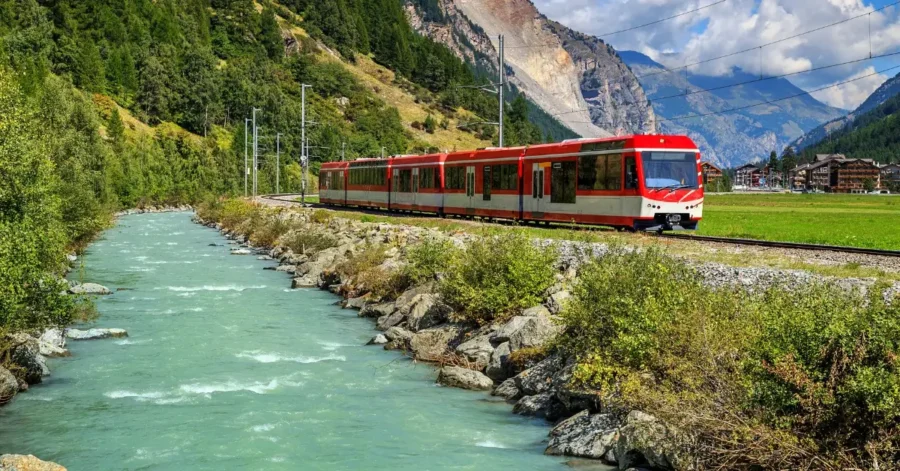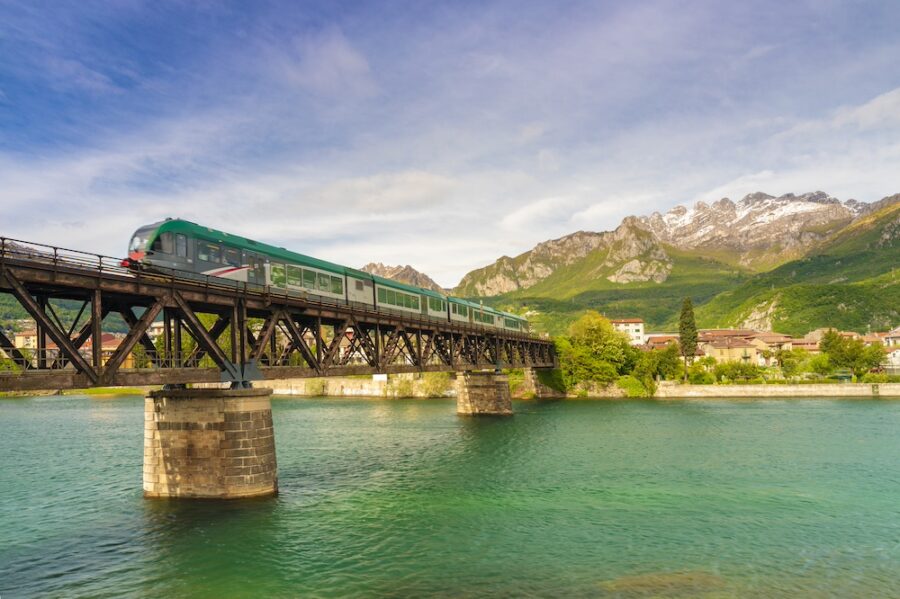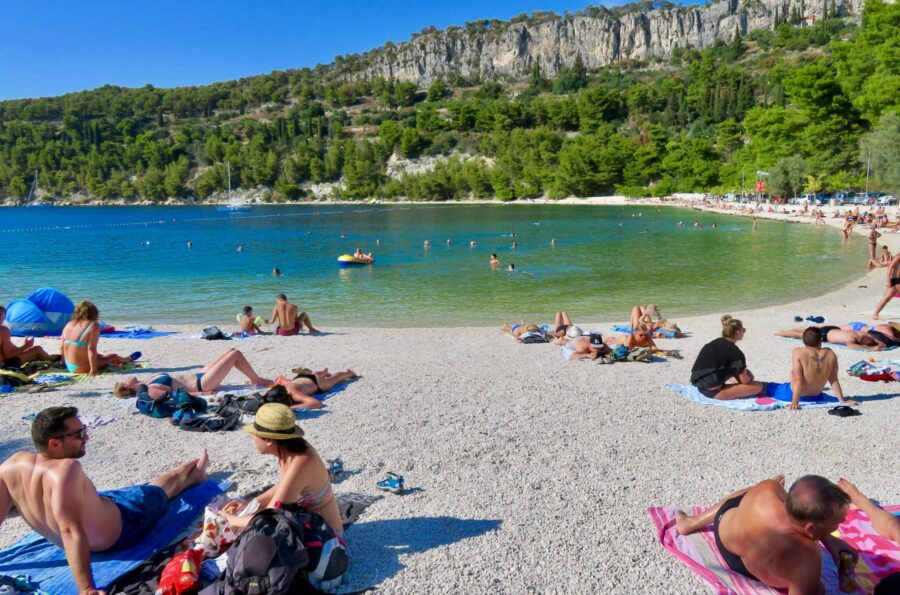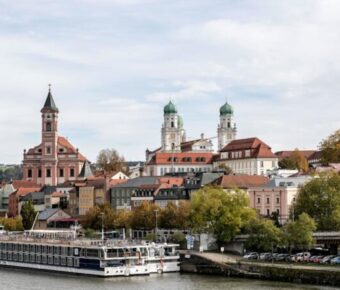
Cheapest Eurail Pass Itinerary 2 Weeks: Insider Tips to Explore Europe on a Budget
Dreaming of that classic two-week Europe trip but feeling anxious about your bank balance? You can stretch your travel budget and still tick off a bunch of highlights by picking the cheapest Eurail pass options and plotting your route with a bit of strategy. You honestly don’t need to splurge on the fanciest trains or rush through the priciest cities—some smart planning gets you just as much magic for less.
Over the years, I’ve rolled from Budapest to Lisbon with nothing but a backpack and a Eurail pass, and I’ve found a bunch of ways to keep trips affordable. You just need to know which routes to take, how to dodge those sneaky extra fees, and which cities really give you the best bang for your buck.
Sometimes the hidden gems are the ones you’d never expect, and picking them can totally reshape your trip.
Table of Contents
- Key Takeaways
- Understanding the Eurail Pass Options
- Differences Between Eurail Pass, Global Pass, and Interrail Pass
- Choosing the Right Eurail Pass for a 2-Week Trip
- Planning a Cost-Effective 2-Week Eurail Itinerary
- How to Maximize Savings on Train Travel
- Best Ticket Booking Strategies
- Sample Cheapest Eurail Pass Routes for 2 Weeks
- Classic Western Europe Route
- Central and Eastern Europe Adventure
- City Highlights Along Your Rail Journey
- Must-See Sights in Major Cities
- Unmissable Experiences and Hidden Gems
- Transportation and Train Types in Europe
- Overview of High-Speed Trains and Night Trains
- Understanding Local Transport Connections
- Tips to Make Your Europe by Train Adventure Cheaper
- When and How to Book for the Best Value
- Smart Packing Tips for Backpackers
- Practical Travel Advice for Your Eurail Journey
- Managing Schengen Visas and Travel Insurance
- Important Reservation Practices
- Exploring More Destinations and Unique Stops
- Beautiful Beaches and Alternative Cities
- Frequently Asked Questions
- What are the best strategies to maximize travel across Europe with a 2-week Eurail pass?
- Which European cities offer the most cost-effective options for travelers using a Eurail pass for 14 days?
- What tips can you offer for someone planning a budget-friendly, 2-week train itinerary in Europe?
- How does the cost of a 2-week Eurail pass compare to other transportation options in Europe?
- Can you help travelers distinguish between the various Eurail pass options for a two-week trip?
- What are some unexpected expenses to be aware of when planning a train journey through Europe for two weeks?
- Book Your Dream Experience
- More Travel Guides
Key Takeaways
- Choose the right Eurail pass and plan your trip for maximum savings
- Pick cost-friendly routes and cities that offer the most value
- Use expert tips to avoid extra costs and make train travel easy
Understanding the Eurail Pass Options

Not all train passes are created equal, and figuring out the differences can save you both money and headaches. Picking wisely between Eurail, Global, and Interrail really shapes your 2-week Europe adventure, so let’s break it down in plain English.
Differences Between Eurail Pass, Global Pass, and Interrail Pass
First—let’s clear up the names because, honestly, they tripped me up for ages. Not every pass works for everyone. The Eurail Pass is for people living outside Europe. If you’ve got a European passport or official residence, you’ll want the Interrail Pass instead.
Inside Eurail, you’ve got the Global Pass. With the Global Pass, you get unlimited travel between 30+ European countries. Hop from Paris to Rome to Prague (and beyond) all on the same pass. Super handy if you’re feeling ambitious or just, well, indecisive (which I usually am—it’s part of the adventure).
Single-country passes exist too, but they only cover one nation. In my experience, the Global Pass is way better for a 2-week trip where you want a taste of several countries. It opens up way more options.
Choosing the Right Eurail Pass for a 2-Week Trip
For a two-week itinerary, your biggest decision is between a continuous or flexible pass. The continuous version lets you travel every day in your 2-week window (so, 15 days straight). The flexible version covers a set number of travel days within those two weeks.
For most folks (especially if you’re not planning to switch cities every day), the flex pass is the true budget saver.
Here’s a tip from someone who’s spent more time on European trains than at home: count your long-distance journeys before buying anything. If you’re planning five or six “big moves” between cities, a flex pass with 5-7 days will do the trick.
Short hops (like a quick ride to a nearby village) might be cheaper if you just buy them separately. And check for extra seat reservations on fast trains—some routes require these and they always catch people off guard.
Honestly, if you like having options open, the Global Pass is my usual pick, especially for first-timers doing the classic “2 weeks in Europe” loop.
Planning a Cost-Effective 2-Week Eurail Itinerary

Saving money on a Eurail journey goes way beyond finding the cheapest ticket. How you plan your route and book your passes makes a huge difference—and knowing a few behind-the-scenes tricks helps a lot.
How to Maximize Savings on Train Travel
Pick countries with cheaper train fares or stick to regions where reservations aren’t mandatory. Italy, Belgium, and Austria often have chill regional lines, so you dodge extra fees. High-speed routes in France, Spain, or Switzerland? They look tempting, but those reservations and supplements add up fast.
Start your journey at bigger hubs like Paris or Munich. You’ll get more train options and avoid awkward connections. For a budget Europe itinerary 2 weeks long, line up your cities in a logical loop—no backtracking, less wasted time, and smaller travel costs.
Bring snacks from supermarkets and make use of city day passes instead of hopping in a taxi. Every euro you save means another museum visit or gelato break—trust me.
Best Ticket Booking Strategies
Book your Eurail pass early, especially if you’re traveling in summer. Prices can jump closer to departure, and sometimes the cheaper options disappear.
I always double-check for special rail itineraries or limited-time offers.
When you’re picking your pass, look at where you want to go before you start counting up days. Are you traveling every day or grouping travel together? Sometimes a Flexi Pass makes more sense than a Continuous Pass—I’ve made that mistake before and ended up with more travel days than I needed.
Comparing on travel booking platforms like Expedia is a good move.
And if your route needs train reservations, book those as far ahead as possible. For the cheapest eurail pass itinerary 2 weeks options, avoid peak travel days if you can—midweek is usually less crowded and easier on the wallet.
Sample Cheapest Eurail Pass Routes for 2 Weeks

Traveling Europe on a budget doesn’t mean missing out on incredible cities. With the right Eurail pass, you can see top destinations and spend smart by picking routes with short hops, fewer seat reservations, and scenery you won’t forget.
You’ve got two main ways to do this: stick with the classic Western capitals or jump east for a more off-the-beaten-path adventure. Both options give you a taste of rich history, food, and culture without blowing your budget.
Classic Western Europe Route
This route is perfect if you want to hit the famous cities everyone dreams about. Start in London (if your Eurail Pass allows—you’ll need the Eurostar, which costs extra, so book ahead for any deals).
Then zip over to Paris for a couple nights, wander the cafés, and maybe climb the Eiffel Tower if the lines aren’t too wild.
From Paris, the train to Brussels is a breeze, and you can snack on waffles and see the Grand Place.
Don’t skip Bruges—it’s a short hop from Brussels and feels straight out of a fairy tale.
Next up, head north to Amsterdam, where canals and bikes rule the streets. After that, stop in Hamburg before you make your way into Berlin.
You get a mix of modern, quirky urban vibes and real history at every turn.
If you’ve got a few days left, consider a side trip to Copenhagen (book those train seats early), or take a leisurely ride down through Germany’s smaller towns.
For budget trips, focus on regional trains—less reservation fees, and you’ll see more countryside.
Sample City Order:
- London
- Paris
- Brussels
- Bruges
- Amsterdam
- Hamburg
- Berlin
- (Optional: Copenhagen)
Money-Saving Tips:
- Pick night trains to save on hotels.
- Use grocery stores for lunches.
- Always check for youth or under-27 discounts if you’re eligible.
Central and Eastern Europe Adventure
This route is your best shot if you want fewer crowds and lower costs. Start from Berlin, which is hip but still much more affordable than Paris or London.
After a few days and a currywurst (seriously, try it), hop to Prague. Just wandering the old city is a treat, and you might catch some street musicians on Charles Bridge.
Next is Bratislava—super close to Vienna, less pricey, and the old town is walkable in a day or two.
Afterward, take a train to Budapest. I keep coming back for the thermal baths and ruined pubs. If you want something extra, head into Switzerland and base yourself in Interlaken or Lucerne—Switzerland is pricey, but you can save by booking hostels and grabbing simple meals.
If you need a nature break, spend time at lakes or hop on a scenic train. The scenery around Interlaken is wild, and you get free boat rides on Lake Thun with your pass (a real highlight on one of my trips).
Sample City Order:
- Berlin
- Prague
- Bratislava
- Budapest
- Interlaken
- Lucerne
Money-Saving Tips:
- Stay in hostels or budget guesthouses—Eastern Europe is full of them.
- Buy snacks and water for those long train rides.
- In Switzerland, grab picnic supplies at supermarkets and skip the fancy restaurants.
City Highlights Along Your Rail Journey

With a Eurail pass, you can hop between Europe’s greatest cities, ticking off famous landmarks and stumbling into places you might never have found otherwise. Each destination offers iconic sights, unique flavors, and a few surprises—so pace yourself.
Must-See Sights in Major Cities

Starting off in Paris, the Eiffel Tower is a must for that electric city view, but don’t skip the Louvre. I always get lost in its endless art halls, especially in the quieter corners way beyond the Mona Lisa.
If you’ve got a morning to spare, wander over to Notre Dame. Standing in front of it after sunrise is oddly peaceful, even with tourists milling around.
Next up is London. Big Ben and the Houses of Parliament loom over the Thames, but for something quieter (and still so British), I’d go for an early stroll through the area around Westminster Abbey before the crowds show up.
If heights don’t bother you, the London Eye gives sweeping views—book ahead or hunt for deals for a cheaper ride.
Barcelona is another highlight. Nothing really prepares you for your first look at the Sagrada Familia. Gaudí’s wild architecture pops up everywhere, but this cathedral is the real showstopper.
Every corner’s got cool street art and food markets, so let yourself wander a bit off the main roads.
Unmissable Experiences and Hidden Gems
Each city has its headline acts, but the real joy comes from the little surprises. In Brussels, grab a fresh Belgian waffle and maybe pop into Delirium Café—the beer menu is legendary, but the crowd’s the real fun.
Nearby, I once found an alley lined with comic murals that barely shows up on tourist maps.
Budapest splits into two halves—Buda and Pest—divided by the river, and crossing the chain bridge at sunset with Buda Castle lighting up is a memory that sticks. For another “wow” moment, take the train up to Switzerland’s Jungfraujoch for snowy scenery even in summer, and give yourself enough time in Lauterbrunnen Valley; it really looks like something out of a storybook.
Munich’s Englischer Garten is a great break from sightseeing—locals surf on the Eisbach river (yes, really), and the beer gardens make it easy to linger for hours.
If you want to fit in extra activities or day trips not covered by your rail pass, booking city tours ahead of time can save both time and money, especially for those harder-to-reach hidden gems.
Transportation and Train Types in Europe

When you’re planning the cheapest Eurail pass itinerary for two weeks, knowing your train options can really make or break your trip.
There’s a surprising variety of train types across Europe, and not all choices are obvious when you first start digging in.
Overview of High-Speed Trains and Night Trains
High-speed trains truly steal the spotlight in Western Europe—think France’s TGV or Spain’s AVE. They zip you between cities so fast it almost feels like cheating; Paris to Amsterdam clocks in at just over three hours on the Eurostar. But here’s the catch a lot of travelers miss: high-speed lines can eat into your “cheap pass” dreams. Most require seat reservations, and those sometimes come with a surprisingly hefty fee. It’s not the end of the world, just something to keep in mind if you’re counting every euro.
Night trains aren’t as common as they used to be, but they still link big hubs like Vienna, Berlin, and Zurich. Honestly, they’re a clever way to stretch your budget—sleep on the move and skip a hostel bill. I always toss an eye mask and some snacks into my bag, because comfort can be a bit of a gamble (and if you’re not in a couchette, don’t expect much sleep).
Here’s a quick cheat sheet for which trains usually need reservations with a Eurail Pass:
| Train Type | Seat Reservation Needed? | Comment |
|---|---|---|
| High-Speed | Often Yes | Can be pricey |
| Night Train | Usually Yes | Save on hostels, maybe |
| Regional/Local | Rarely | Most flexible |
Understanding Local Transport Connections
You step off a long-distance train, but you’re rarely at your final stop. Most European stations land you smack in the city center, but sometimes your hostel or that must-see spot is still a tram or metro ride away.
Every country seems to have its own set of ticket quirks. Sometimes you’ll need a separate ticket for a city bus, and occasionally your Eurail Pass gets you a discount—but don’t expect a free ride. I once ended up in Vienna without a valid metro ticket after a marathon train day—not my best moment, and it was a pricey lesson. Check the local rules as soon as you arrive; don’t count on the station’s Wi-Fi for last-minute research.
If you’re trying to stitch together the cheapest route, plan your connections before you leave. Regional trains usually cost less and rarely need reservations, so you get more flexibility if you’re patient and don’t mind skipping the flashy high-speed lines. And honestly, if you’re lost, just ask a local which tram to catch—they love sharing those off-the-radar tips.
Tips to Make Your Europe by Train Adventure Cheaper

Saving money on trains in Europe isn’t just about when you book—it’s about how you travel and what you pack. Your style can make or break both your comfort and your budget, whether you’re racing between capitals or meandering through sleepy towns.
When and How to Book for the Best Value
If you’re after the best deals, book your train tickets or Eurail pass as early as possible. High-speed and international trains in places like France, Italy, and Spain? Those seat reservations go fast, and prices climb the longer you wait. I learned that the hard way after a last-minute ticket splurge in Italy.
Try to travel during off-peak seasons if you can swing it. Summer’s lovely, but prices skyrocket and trains get packed. Mid-week trips (Tuesday or Wednesday) and midday departures tend to be a bit quieter—and sometimes cheaper. Always compare tickets and passes for your route on official rail websites or apps before you commit.
Tip: Flexibility is your wallet’s best friend. If you’re willing to move your plans by a day or two, or don’t mind odd travel times, you’ll often score a better rate. Sign up for fare alerts, and don’t sleep on youth or regional discounts—they’re easy to miss but can save you a bundle.
Smart Packing Tips for Backpackers
Traveling light isn’t just about comfort—it’s about speed and sanity. European train stations love their stairs, tiny lifts, and crowds. Dragging a massive suitcase slows you down and makes you an easy mark for pickpockets.
I stick to a backpack that fits overhead, packing just the essentials for two weeks: a few mix-and-match outfits, quick-dry socks, one solid pair of shoes, and a packable rain jacket. Keep your toiletries travel-sized and in a clear bag for those random station checks. Honestly, investing in a good travel gear organizer or a set of packing cubes is a game-changer.
Packing list:
- 1 travel backpack (carry-on size)
- 3–4 shirts, 2 pants/shorts, 1 dress/skirt (if you’re into that)
- Underwear and socks for 5–6 days
- Light jacket or raincoat
- Portable charger and a reusable water bottle
- Small combo lock for hostel lockers
The lighter you pack, the smoother your rail adventure. You’ll thank yourself when you’re sprinting for a train with everything on your back—no wheels snagging on cobblestones.
Practical Travel Advice for Your Eurail Journey

Traveling Europe with a Eurail Pass gets so much easier with a bit of practical know-how. A little prep around visas, insurance, and reservations goes a long way toward avoiding headaches.
Managing Schengen Visas and Travel Insurance
If you’re coming from outside the EU, double-check Schengen visa rules well before your trip. Most travelers can explore the Schengen Area for up to 90 days without a visa, but requirements do change—so check your passport’s situation early.
Don’t skip travel insurance. Delays, pickpockets, or sudden medical surprises can really ruin a trip if you’re not covered. I always recommend insurance that covers medical, lost luggage, and trip cancellations. Spend a few minutes comparing travel insurance options before you leave—it’s worth it.
Keep digital and paper copies of your visa paperwork and insurance. If your phone dies or you lose Wi-Fi, you’ll be glad you did. It takes a little time to organize, but you’ll thank yourself if you ever need proof at a border or in an emergency.
Important Reservation Practices
Some trains—especially high-speed or busy international routes—require seat reservations, even for Eurail Pass holders. I watched a family last summer miss their train because they hadn’t booked seats ahead. Reserve early for popular routes or overnight trains, especially in peak season.
Use official rail company sites or the Eurail app to avoid surprise fees. I jot down all my reservations in a notebook or on my phone—French and Italian conductors love seeing things in order.
Plan your route with some flexibility, but don’t leave everything to the last minute. Mix a few spontaneous hops with some solid, pre-booked trips. That way you get the thrill of winging it, but without the stress of being stranded or paying through the nose.
Exploring More Destinations and Unique Stops

Eastern Europe is a goldmine if you’re willing to veer off the classic Paris-to-Rome trail. Honestly, the best memories come from places you didn’t see coming—and those rarely make the Instagram rounds.
Beautiful Beaches and Alternative Cities
Craving sun and sand? Dodge the crowds in Spain and Italy and go east. The beaches in Split, Croatia, are warm, laid-back, and way easier on your wallet. I once spent an entire afternoon just watching card games on Bacvice Beach. And don’t sleep on Varna, Bulgaria—the Black Sea coast is under-the-radar, with lively boardwalks and locals selling homemade pastries.
If you want something other than the usual capitals, Ljubljana in Slovenia is a breath of fresh air—small, green, and almost fairy-tale pretty. You can bike everywhere or just drift down the river with gelato. Kotor in Montenegro? That place floored me—mountains drop right into the Adriatic, and sunsets there are unreal. If you want big city energy without big city prices, try Krakow. The Old Town is packed with hidden bars, affordable eats, and more history than you’d expect.
Here’s a quick list of alternative destinations you can hit with a budget Eurail pass:
| Hidden Gem | Beach Access | Best For |
|---|---|---|
| Split, Croatia | Yes | Warm weather, nightlife |
| Varna, Bulgaria | Yes | Cheap eats, Black Sea |
| Kotor, Montenegro | Nearby | Scenic views, quiet vibes |
| Ljubljana, Slovenia | No | Bike rides, casual walks |
| Krakow, Poland | No | History, bars, old towns |
Try throwing one or two of these into your trip. Sometimes, the places you add on a whim become the stories you tell the most.
Frequently Asked Questions
Traveling Europe with a Eurail pass can be cost-effective if you plan smart. Some cities offer better connections, lower reservation fees, or more frequent trains, which helps stretch your budget.
What are the best strategies to maximize travel across Europe with a 2-week Eurail pass?
Honestly, focus on long train rides. Using a travel day for a one-hour hop? That’s a waste. Jumping between major cities—Paris to Berlin, Milan to Vienna—gives you the most bang for your buck.
Travel on consecutive days in expensive regions. Try an overnight train at least once; you’ll save on accommodation and wake up somewhere new. Always check if a seat reservation is needed before you board. Some routes demand them, and you don’t want to end up standing or paying a nasty supplement.
Which European cities offer the most cost-effective options for travelers using a Eurail pass for 14 days?
Big cities with pricey, fast trains—Paris, Amsterdam, Zurich, Vienna—are where the pass really shines. Short hops in places like Belgium or the Netherlands? You’re usually better off with single tickets.
Eastern European cities have lower fares, but your Eurail pass covers them, so make the most of it for longer trips. One of my favorite rides was Munich to Budapest—fantastic use of the pass, and you’ll see the landscape change right outside your window.
What tips can you offer for someone planning a budget-friendly, 2-week train itinerary in Europe?
Book seat reservations as early as you can, especially for high-speed lines. Some fill up weeks in advance. Mix expensive cities with a few cheaper spots to balance things out. I love pairing big hubs with smaller towns—like Paris and Lyon or Florence with Bologna.
Don’t go overboard with spontaneous travel. It sounds fun, but last-minute reservations can sting your wallet. And always pack snacks! Station food is pricey and rarely worth it. A loaf of bread and cheese from a corner shop can save the day.
How does the cost of a 2-week Eurail pass compare to other transportation options in Europe?
You’ll usually save money over buying single tickets, especially if you stick to high-speed or international trains. Flying can look cheap, but you lose hours to airport security, transfers, and waiting around.
Buses sometimes cost less than Eurail, but they’re slower and, honestly, less comfortable. I’d rather not spend my prime youth sleeping upright next to a stranger if I can help it. For flexibility and seeing the countryside, Eurail is tough to beat.
Can you help travelers distinguish between the various Eurail pass options for a two-week trip?
You’re mostly choosing between Global Passes and One Country Passes. The Global lets you roam across multiple countries; the One Country is, well, just for one. For two weeks, pick a 10 or 15-day Global Pass if you’re crossing borders more than once or twice.
If you’re only exploring one country—Italy or Spain, maybe—the One Country Pass might make sense, but I’ve found it’s rarely as fun as hopping around. Some passes cover consecutive days, others are flexi (any days within a set period)—choose based on how often you want to move.
What are some unexpected expenses to be aware of when planning a train journey through Europe for two weeks?
Seat reservations can sneak up on you. They’re not always included, and on those famous high-speed trains, you might pay up to €30 just to secure a spot.
Night trains? They’ll often tack on a surcharge if you want a sleeping bunk. It’s not always obvious, but trust me, you’ll want to check before hopping aboard.
City transit to and from major train stations can trip you up, too. In big cities, especially after hours, you might find yourself shelling out for a pricey cab—like that €15 ride I once took across Paris when the Metro called it quits early.
Some remote spots, ferries, or even certain buses just aren’t covered by your rail pass. It pays to double-check the route before you show up expecting a free ride.
Oh, and here’s a little tip: station snacks and bottled water cost a small fortune. I always stash a few snacks and fill up my water bottle before hitting the rails. It’s a small thing, but over two weeks, it really adds up.



